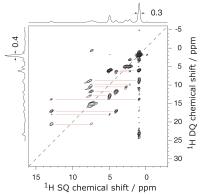Pulse Sequence Development
High-Resolution 1H Solid-State NMR
|
We have developed, together with the Emsley group in Lyon, France, high-resolution 1H DQ pulse sequences employing DUMBO 1H homonuclear decoupling: in 2004, we presented a 1H-1H DQ-SQ (single-quantum) 2D experiment that was demonstrated to achieve an up to factor of nine resolution enhancement as compared to fast MAS for a dipeptide (Brown 2004); in 2010, we presented a 1H (DQ) -13C (SQ) pulse sequence employing the refocused INEPT pulse sequence element to transfer coherence, which allows the better resolution of 1H DQ peaks via the 13C dimension (Webber 2010). |
|
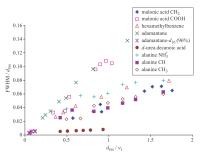 |
This work is supported by a collaboration with Paul Hodgkinson, Durham looking at the factors affecting 1H resolution under MAS (Zorin 2006) and homonuclear decoupling (Zorin 2008 & Tatton 2012). | 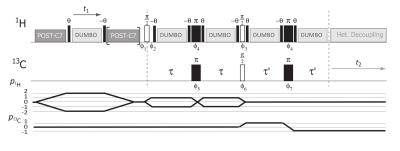 |
Utilising, Detecting and Quantitatively Determining J Couplings
|
Together with other researchers (including Malcolm Levitt, Southampton & the Emsley (Lyon, France) & Massiot (Orléans, France) groups), we have presented a description that combines analytical theory, experiment and density-matrix simulation for the homonuclear spin-echo (Duma 2004) and refocused INADEQUATE (Fayon 2005 & Cadars 2007) experiments that are used to quantitatively determine J couplings and demonstrate through-bond connectivities, respectively. In 2009, we presented the first-ever 15N-17O experiments, by which 2hJ15N-17O couplings across NH...O hydrogen bonds were quantitatively determined for uracil (Hung 2009). |
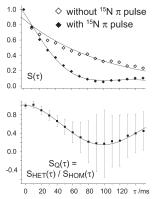 |
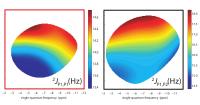 |
We have also shown how the REINE (REfocused INadequate spin-Echo) experiment first presented by Cadars et al (Cadars 2007) can be applied to a phosphate glass to reveal correlations between the 2JPP coupling and the 31P chemical shifts of the coupled nuclei for apparently featureless DQ peaks (Guerry 2009). |
Residual Dipolar Couplings
|
Working together with the Levitt group in Southampton, we have shown how dipolar couplings and hence distances can be determined by recording the spin-echo evolution for sample spinning off the magic angle (Pileio 2007). The use of a doubly-selective cosine-modulated Gaussian pulse enables small dipolar couplings corresponding to longer distances to be determined for fully 13C-labelled molecules (Pileio 2008).
|
 |

